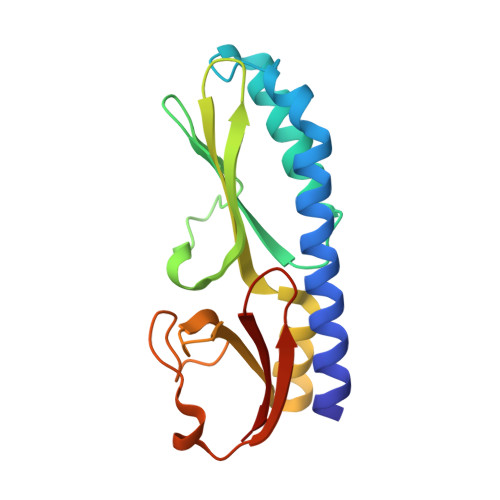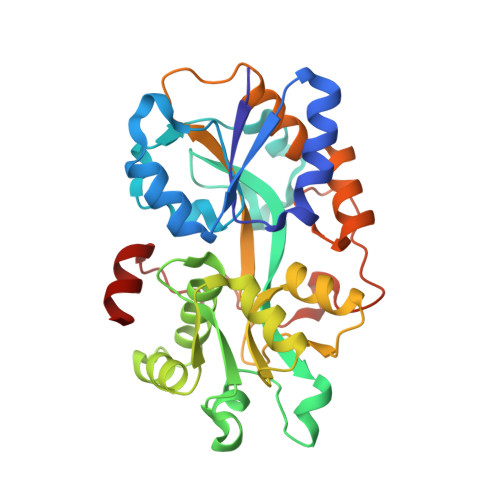Interface switch mediates signal transmission in a two-component system.
Wang, M., Guo, Q., Zhu, K., Fang, B., Yang, Y., Teng, M., Li, X., Tao, Y.(2020) Proc Natl Acad Sci U S A 117: 30433-30440
- PubMed: 33199635
- DOI: https://doi.org/10.1073/pnas.1912080117
- Primary Citation of Related Structures:
6LKG, 6LKH, 6LKI, 6LKJ, 6LKK, 6LKL - PubMed Abstract:
Two-component systems (TCS), which typically consist of a membrane-embedded histidine kinase and a cytoplasmic response regulator, are the dominant signaling proteins for transduction of environmental stimuli into cellular response pathways in prokaryotic cells. HptRSA is a recently identified TCS consisting of the G6P-associated sensor protein (HptA), transmembrane histidine kinase (HptS), and cytoplasmic effector (HptR). HptRSA mediates glucose-6-phosphate (G6P) uptake to support Staphylococcus aureus growth and multiplication within various host cells. How the mechanism by which HptRSA perceives G6P and triggers a downstream response has remained elusive. Here, we solved the HptA structures in apo and G6P-bound states. G6P binding in the cleft between two HptA domains caused a conformational closing movement. The solved structures of HptA in complex with the periplasmic domain of HptS showed that HptA interacts with HptS through both constitutive and switchable interfaces. The G6P-free form of HptA binds to the membrane-distal side of the HptS periplasmic domain (HptSp), resulting in a parallel conformation of the HptSp protomer pair. However, once HptA associates with G6P, its intramolecular domain closure switches the HptA-HptSp contact region into the membrane-proximal domain, which causes rotation and closure of the C termini of each HptSp protomer. Through biochemical and growth assays of HptA and HptS mutant variants, we proposed a distinct mechanism of interface switch-mediated signaling transduction. Our results provide mechanistic insights into bacterial nutrient sensing and expand our understanding of the activation modes by which TCS communicates external signals.
Organizational Affiliation:
Ministry of Education Key Laboratory for Membraneless Organelles & Cellular Dynamics, Hefei National Laboratory for Physical Sciences at the Microscale, School of Life Sciences, Division of Life Sciences and Medicine, University of Science and Technology of China, 230027 Hefei, P.R. China.
















